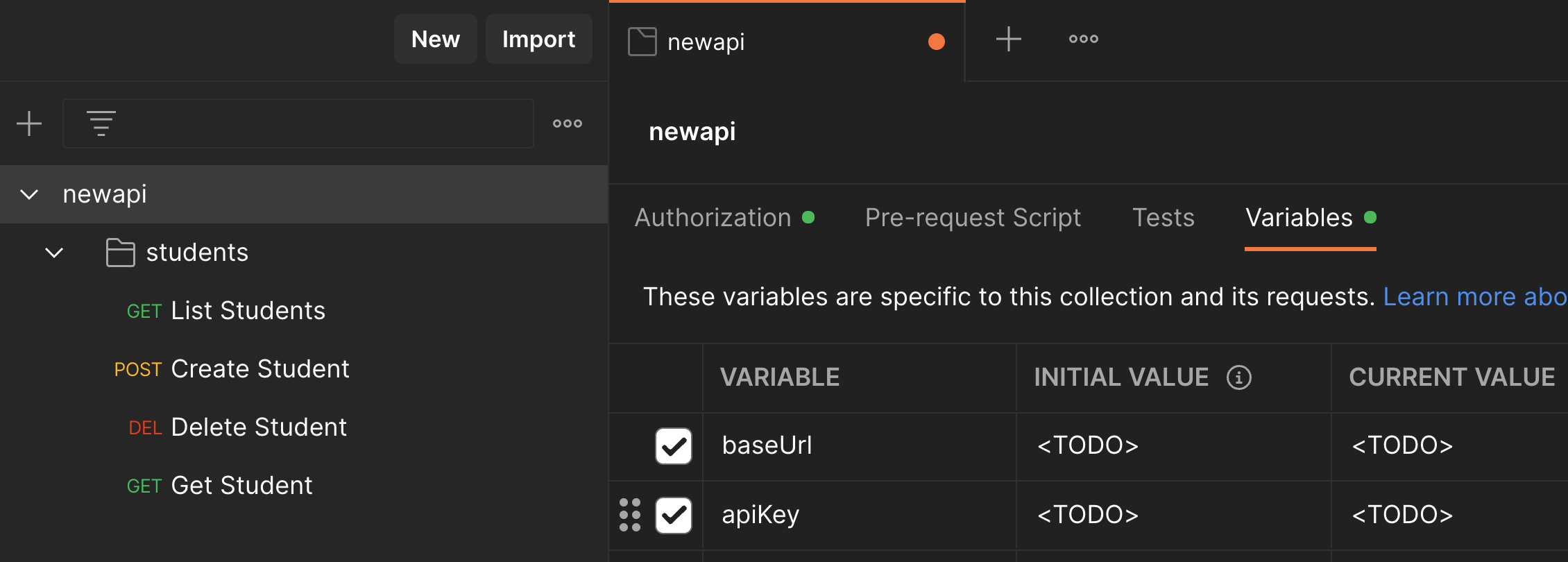Azure Course Labs
API Managment: Mocking new APIs
New APIs are often designed with a three-way discussion between the API architect, the data owner and the API consumer. That approach ensures you have an API which adheres to best practices and provides the consumer with the information they need from data you know is available.
The period between design and delivery could be long, so it’s a good idea to publish a mock. This is a real API service which has all the operations agreed in the design, but returns dummy data. Teams can program against the mock until the real API is available.
In this lab we’ll use API management to design an API, publish mock responses, and test that it adheres to the agreed specification.
Reference
Create a new API
You should have an existing API Management service from the API Management lab. Browse to it in the Portal and create a new API:
- select manually defined HTTP API
- enter any name and URL
- use the APIM URL suffix
newapi
Open the Definitions tab - this is where you define the types of object the API works with.
Create a definition called Student from this sample JSON:
{
"StudentId": 2315125,
"FullName" : "Test One"
}
And another definition called StudentDetail from this sample JSON:
{
"StudentId": 2315125,
"CompanyId": 124121,
"FirstName" : "Test",
"LastName" : "Two",
"Courses" : [
{
"CourseCode": "AZDEVACAD",
"Completed" : "22-11"
},
{
"CourseCode": "K8SFUN",
"Completed" : "21-01"
}
]
}
And lastly an array definition called StudentArray using this payload:
{
"type": "array",
"items": {
"$ref": "#/definitions/Student"
}
}
The API will let you manage students, using these resources definitions.
Add mocked operations
Add operations to the API design to list students, create a student, get the details for a student and delete a student.
- List Students
- GET from the url
/students - returns
200 OKresponse- with an
application/jsonrepresentation of theStudentArraydefinition
- with an
- GET from the url
- Create Student
- POST to the url
/students - with a request payload
- an
application/jsonrepresentation of theStudentDetaildefinition
- an
- returns
201 Createdresponse- with an
application/jsonrepresentation of theStudentDetaildefinition
- with an
- POST to the url
- Get Student
- GET from the url
/students/{studentId} - with
studentIdas a template parameter - returns
200 OKresponse- with an
application/jsonrepresentation of theStudentDetaildefinition
- with an
- returns
404 Not foundresponse- with no payload
- GET from the url
- Delete Student
- DELETE to the url
/students/{studentId} - with
studentIdas a template parameter - returns
204 No Contentresponse- with no payload
- returns
404 Not foundresponse- with no payload
- DELETE to the url
For each operation:
- add an Inbound processing policy
- use the
mocked-responsepolicy - select the correct response code
Test the operations to check that you get a mocked response with the correct data types
Publish the mocked API
Add the new API to the Unlimited product, and create a subscription for the product.
Test your API with curl using the subscription key - you should get the mocked responses for each operation:
# this should return a student array:
curl "https://<apim-name>.azure-api.net/newapi/students" -H "Ocp-Apim-Subscription-Key: <subscription-key>"
# this should return a student detail:
curl "https://<apim-name>.azure-api.net/newapi/students/1234" -H "Ocp-Apim-Subscription-Key: <subscription-key>"
curl is the litmus test for REST APIs - if you can navigate them from the command line, then consumers will definitely be able to work with them in code.
Consume & Test with Postman
curl isn’t very user-friendly though. A great (free) tool for working with REST APIs is Postman:
- install Postman or
- try Postman online
Postman is about the most popular tool for working with REST APIs. You can set up all the requests you want to make and parameterize any variables, so it’s very flexible.
There’s a Postman collection in this repo which has the consumer’s expectation of the API you’ve just mocked out. You should be able to import that in Postman, point it to your mock and make all of the operation calls:
- import the collection file
labs/apim-mock/students.postman_collection.json - open the collection and navigate to the Variables tab:

Set the values for the mock API you created in APIM:
baseUrlis the full URL e.g.https://myapim.azure-api.net/newapiapiKeyis the subscription key - the same one you used with curl
Click Save and try all the operations - they should all give the expected response code and response. If not you’ll need to check your API design in APIM.
Lab
This API spec was manually put together in the APIM designer. That’s easy to do but not easy to share. How could you distribute the API spec to consumers?
Stuck? Try suggestions ___
Cleanup
Don’t clean up yet!
One APIM instance can host multiple APIs and we’ll use the same resource in the next few labs, rather than deleting it and waiting another hour to create a replacement.